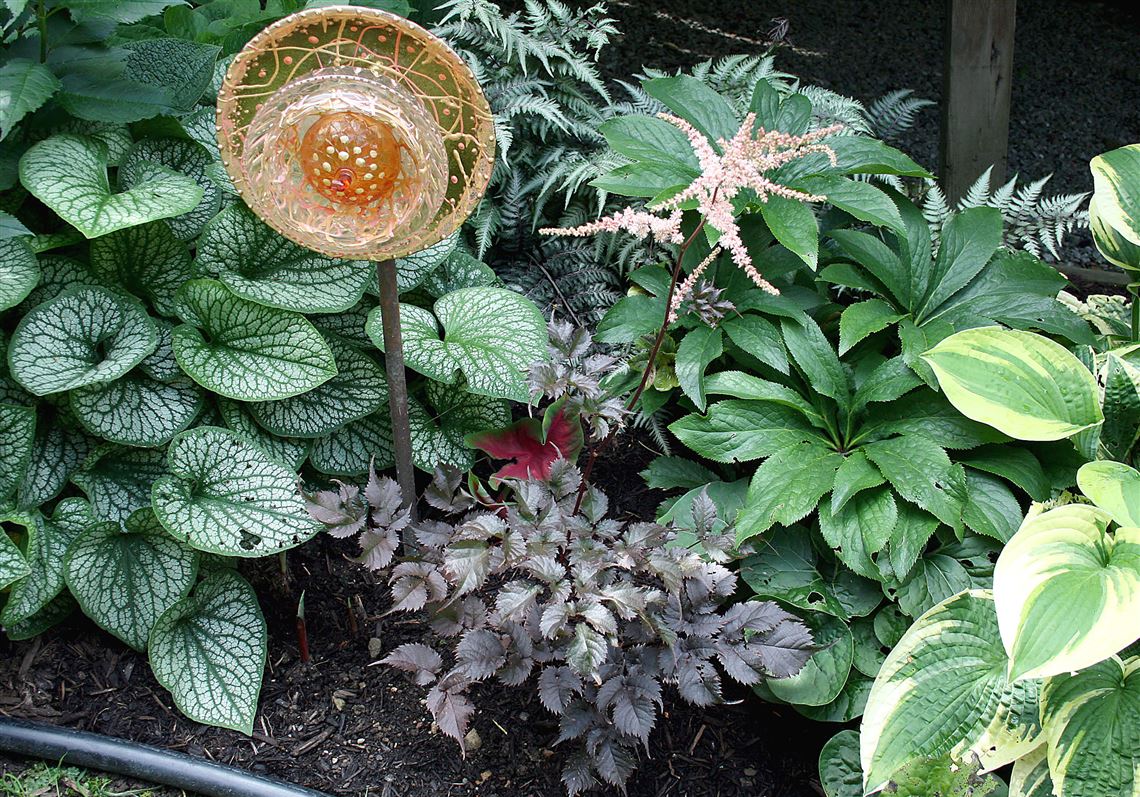As our gardens mature, and the trees reach significant heights, light conditions in the garden totally change. Sun-loving plants lean outward to meet their needs. It’s clearly time to redesign those bed for perennials that grow in shade or partial shade.
Shade gardens were once viewed as an unpleasant, boring solution. Ferns, hostas and coral bells dominated and provided little more than form and texture to the green landscape. But today’s nurseries feature a colorful array of plants that have been hybridized to grow in these conditions.
One of the key players is the astilbe. Adding sparkling resonance, this perennial has fernlike foliage topped with airy plumes of pink, white, peach, red or lavender flowers.
In addition to this wide range of colors, hybridizers have also endowed these plants with heights ranging from 6 inches to 5 feet, so they can easily be placed front and center or in the back of the border. They fit comfortably with hostas and ferns because they do not upstage these companion plants.
Astilbes can bring a quiet vibrancy or, when placed beside the water garden, they can resonate. Even after their color fades, the foliage and spent plumes continue to make a lovely statement.
One of the most striking astilbes that has just recently become available is ‘Chocolate Shogun.’ Native to Japan, it sports rich dark brown foliage. Never has there been a plant with quite this intense leaf color. Think of a Hershey bar with gloss.
Topping that beautiful foliage are soft pink cotton candy blooms that appear in early summer, when it reaches about 2 feet in height. Thankfully, it is hardy in in our zone 6, because I anxiously awaited its emergence in spring. I sighed with relief when it proved as dependable as all the other astilbes in my landscape.
This one is special, so position it where it can shine. Although astilbes are perfect companion plants, ‘Chocolate Shogun’ is a garden diva that deserves applause. At Phipps Conservatory’s 2015 seminar, horticulture guru Alan Armitage called this this plant outstanding. I am totally smitten and feel compelled to visit it daily.
For all that they give, astilbes are very undemanding. They prefer shade and moist soil, but it must be well-draining. They can do well in partial shade and even sunlight if they receive enough moisture. However, they will succumb to drought and develop root rot in standing water.
Fertilize in spring with a 5-10-5 granular raked into the soil. I use this on all my perennials. For plants that flower, the middle number is the key to success. It shows the level of phosphate, which promotes blooms.
Astilbes are not garden thugs; they stay in place and do not scatter unwanted seeds. The deer have never dined on mine. This is always cause for celebration. In spite of the increased height of some cultivars, they never need staking and can be divided after three years. Just dig the emerging spring clump and keep the divisions large. In late fall, cut the plant back to within inches of the ground. I have never mulched or protected these plants in any way, and they continued to resurface intact even after the two extreme winters with the polar vortex.
Astilbe is a must-have plant for the shade garden. It brings wonderful color and reliability. The many varieties can be found at local garden centers. Just pick the color and the height that will work best in your landscape. It is hard to pass up these undemanding plants that do so much to light up the shade garden.
Sources
Bluestone Perennials: bluestoneperennials.com or 1-800-852-5243
Rare Find Nursery: rarefindnursery.com
White Flower Farm: whiteflowerfarm.com or 1-800-411-6159
Susan Silverman, a master gardener from Murrysville, was a co-winner, large garden category, of the 2006 Great Gardens contest.
First Published: August 19, 2016, 2:03 p.m.
















